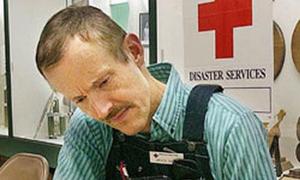BioterrorismLawmakers, scientists question FBI’s investigation, conclusion in 2001 anthrax attacks
Twelve years after the fall 2001 anthrax attacks, and six years after the 2007 FBI’s determination that Bruce Ivins, a top government anthrax researcher at the U.S. Army Medical Research Institute of Infectious Diseases (USAMRIID), was the perpetrator of the attacks (Ivins died in 2008 of apparent suicide), lawmakers and USAMRIID scientists insist that the FBI’s conclusions are not supported by scientific evidence – indeed, that some basic scientific facts make the Bureau’s conclusions untenable.

Bruce Ivins was FBI's only suspect prior to and following his 2008 suicide // Source: zohur.net
After years of requests from lawmakers, the Government Accountability Office (GAO) has opened an investigation into the scientific methods used by the FBI to determine that researcher Bruce Ivins was the sole perpetrator of a 2001 series of anthrax attacks that killed five and injured seventeen.
Ivins, a top government anthrax researcher at the U.S. Army Medical Research Institute of Infectious Diseases (USAMRIID) since 1980, had been interviewed throughout the FBI investigation. He died in 2008 in an apparent suicide by acetominaphen overdose, as the FBI and Department of Justice were preparing to charge him in the attacks.
According to the Frederick News-Post, U.S. Representative Rush Holt (D-New Jersey), whose district was the mailing point for the anthrax-laden letters, has been requesting the GAO to investigate the scientific methodology used by the FBI in concluding, since 2007, that Ivins was the perpetrator.
Bolstering the efforts of Holt and other lawmakers is a 2011 report from a National Research Council (NRC) committee which determined that the conclusions reached by the FBI were not supported by science. At USAMRIID, three of Ivins’s coworkers raised issues that were never addressed by the FBI investigation.
Henry Heine, a friend of Ivins, said that USAMRIID did not have the equipment necessary to dry the number of spores that were sent. Heine’s estimate was that it would have taken Ivins months to grow the volume of anthrax spores that was mailed.
Heine pointed out that nearly thirty gallons of anthrax culture would be needed to produce the spores that were mailed, and USAMRIID did not have a fermenter that could handle such a large quantity. Additionally, the only fermenter the center did have was out of order at the time.
According to a separate Frederick News-Post report, Gerard Andrews and Jeffrey Adamovicz, both of whom served as Ivins’s supervisors, pointed out that there are several other problems with the FBI’s methodology, some of which involve ignoring crucial evidence.
Both pointed out that the FBI ignored the presence of silicone and tin in the samples gathered from the mailings, but not found in the samples provided by Ivins’s lab. This means that the anthrax samples may have been genetically similar, but not chemically similar.
Another bacteria, Bacillus subtilis, was not found in the Ivins-provided flask, but was found in the mailings to media outlets.
“Additionally, it was a genetically unique strain that was not worked on at USAMRIID, let alone Ivins’ lab,” said Andrews. He added that “that forensic marker is critical to exonerating USAMRIID and Bruce Ivins.”
Patrick Eddington, a senior policy advisor to Holt, said, “There needs to be an exhaustive explanation of how the FBI handles cases like this.” Pointing to several other Bureau blunders, Eddington added that the FBI is “still out of their depth when it comes to dealing with cases with this kind of science.”
For its part, the FBI has said that it relied on the totality of it investigation, not just on the science, that lead it to conclude Bruce Ivins’s culpability in the anthrax mailings.
